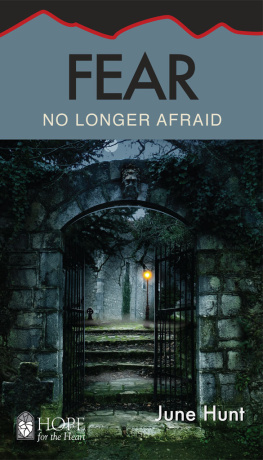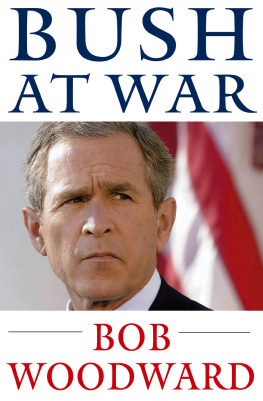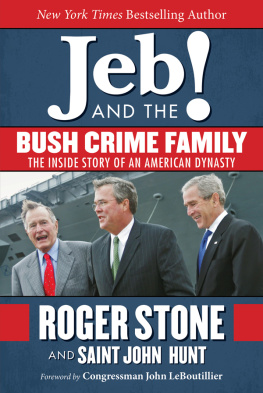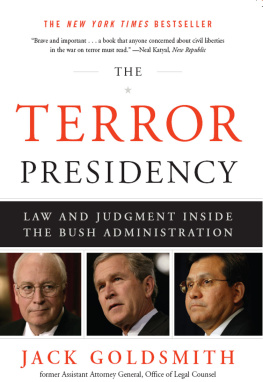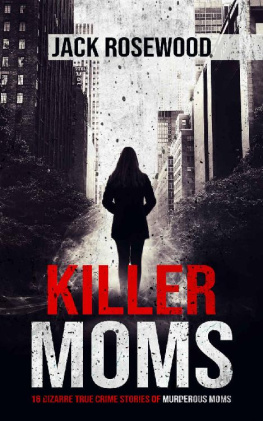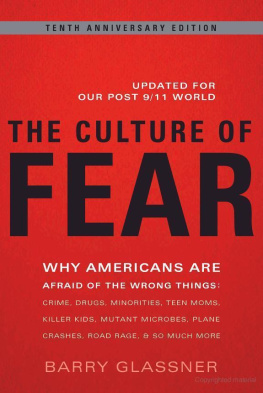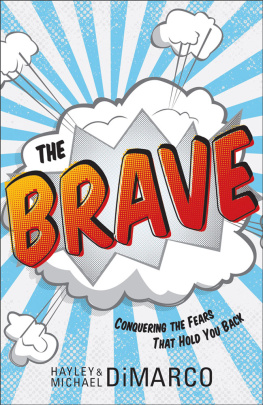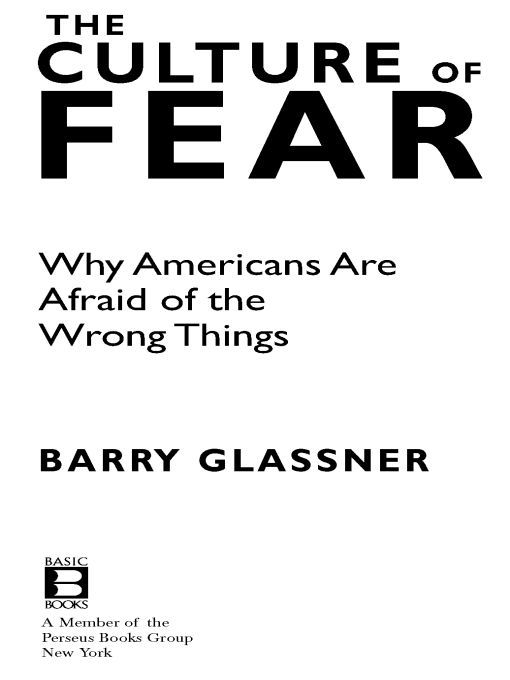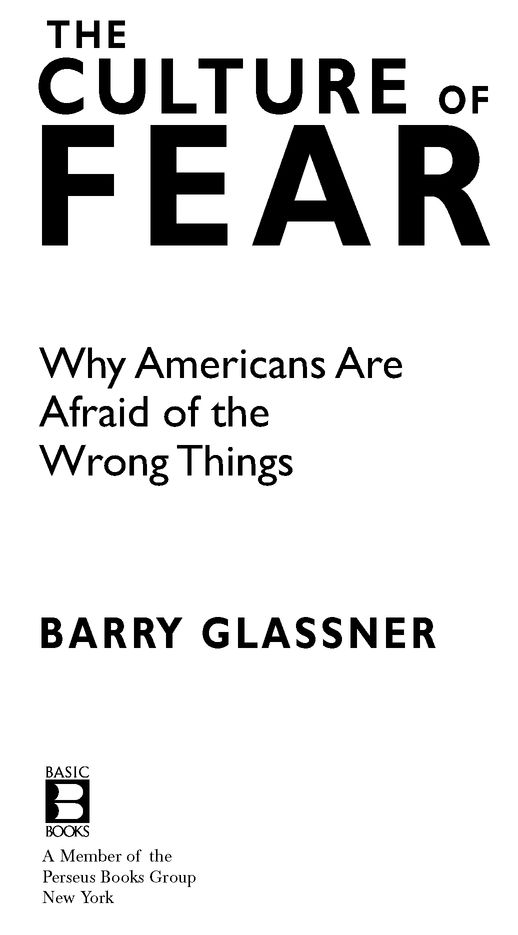Table of Contents
For Delaney, Megan, and Samantha Glassner, Sita Feinberg and Jan Haldipur, and Ben and Leah Rafferty
ACKNOWLEDGMENTS
During the many years in which I planned, researched, wrote, rewrote, and expanded this book, my wife, Betsy Amster, endured more than any spouse ought. She had to put up with weekends in which I scarcely left my study, abbreviated vacations, and newspapers and magazines cut up before she had a chance to read them. Yet whenever I completed a draft of a chapter Betsy took time away from her schedule to identify the flaws in my arguments and offer her expert editorial advice.
I am also especially grateful to my agent, Geri Thoma, for her unfaltering friendship and support. Over time, editors and publishers at Basic Books both encouraged and supported me: Tim Bartlett, whose astute queries and suggestions improved the original book greatly, and John Sherer and Tim Sullivan, whose work was invaluable in bringing out this tenth anniversary edition.
Early on, Wendy DeBoer, a doctoral student at the University of Southern California and primary research assistant on the project, helped me find and organize thousands of news stories, television transcripts, and research studies. Special thanks go as well to my friend Morty Schapiro, my faculty colleagues in the Department of Sociology at USC, and Provost C. L. Max Nikias.
Conversations with numerous other friends, colleagues, and editors educated me and helped me sort out my positions on the topics discussed in these pages. In particular I would like to acknowledge Amy Aronson, Cynthia Fuchs Epstein, Howard Epstein, Steve Fraser, Jonathan Glassner, Judith Grant, Martha Harris, Rosanna Hertz, Sue Horton, Darnell Hunt, Michael Kimmel, Julia Loughlin, Tom Lutz, Morgan Lyons, Mauricio Mazon, Jonathan Moreno, Peter Nardi, Richard Popkin, Hank Rubin, Lillian Rubin, Hilary Schor, David Shaw, Arlene Skolnick, Jerry Skolnick, Gary Taubes, Barrie Thorne, and Alan Wolfe.
INTRODUCTION TO THE TENTH ANNIVERSARY EDITION
A decade has passed since the publication of The Culture of Fear,during which time the term culture of fear has become part of our national lexicon, referenced regularly in academia, the mainstream media, and the blogosphere. Scholarly journals publish papers with titles like The Culture of Fear and the Politics of Education, while popular magazines like Newsweek print essays about The (Play) Dating Game: Our Culture of Fear Means That We Can No Longer Count on Spontaneity to Bring Children Together. Events such as the terrorist attacks of September 11, 2001, the subsequent war on terror, school shootings, vaccine scares, and the election of Barack Obama have given new relevance to many of the concepts I introduced in these pages. We saw numerous instances of individuals and organizations using fear to manipulate the population. They succeeded in large part because, as the book explains, after 30 years of nightly news full of dubious threats, we are fertile soil for fear mongers.
Despite landmark events such as the terrorist attacks of 9/11 and the economic downturn that began in 2008, the culture of fear I outlined in this book continues largely as I portrayed it. Pregnant teenagers, monster moms, Internet predators, and suburban thugs still stalk the airwaves. We still shake our heads over the latest mass shooting while failing to limit access to guns to people who shouldnt have them. We fret over the kidnapping of a single toddler while millions of children live in poverty and attend crumbling schools. Atypical tragedies grab our attention while widespread problems go unaddressed.
Politicians, journalists, advocacy groups, and marketers continue to blow dangers out of proportion for votes, ratings, donations, and prof its. Fear mongering for personal, political, and corporate gain continues unabated. Indeed, many of the specific scares I addressed have resurfaced, sometimes in the very same form as earlier, sometimes in new clothes. I will discuss these, as well as significant ways in which our culture of fear has changed, in a major new final chapter.
Throughout the opening of this century, Americans have remained inordinately fearful of unlikely dangers. Even so, at least in some regards, there have been changes in our culture of fear. Most notably, foreign terrorists replaced domestic bogeymen as the principal figures in fear mongering by politicians and in much of the media. However, the very same scare tactics I discuss in the pages that followmisdirection, presenting victims as experts, and treating isolated incidents as trendshave been applied with great success in the newer fear narrative. In the months immediately following 9/11, for example, the attacks elevated to newsworthiness minor airline mishaps and phony bomb threats that previously would not have made headlines, and created an exaggerated sense of individual risk.
What Is the Price of Fearand Who Pays?
Nothing has done a better job of exploiting our anxieties than the phrase the war on terror, which the Bush administration used incessantly from late 2001 until they left office in early 2009. As former National Security Advisor Zbigniew Brzezinski noted in the Washington Post in 2007, The little secret here is that the vagueness of the phrase was deliberately (or instinctively) calculated by its sponsors. Constant reference to a war on terror did accomplish one major objective: It stimulated the emergence of a culture of fear. Fear obscures reason, intensifies emotions and makes it easier for demagogic politicians to mobilize the public on behalf of the policies they want to pursue.
The culture of fear predates 9/11 by at least a generation, but Brzezinski accurately described what happens when fear overtakes reason: The culture of fear is like a genie that has been let out of its bottle. It acquires a life of its ownand can become demoralizing.... We are now divided, uncertain, and potentially very susceptible to panic in the event of another terrorist attack on the United States.
Whenever one group uses fear to manipulate another, someone benefits and someone pays, as Brzezinski observed. The war on terror had the effect of making us more paranoid not only about terrorists but also about homegrown crime. After sponsoring a survey in 2003 to gauge just how frightened Americans were, the Chubb Group of Insurance Companies introduced Masterpiece Family Protection. Home invasion. Child abduction. Carjacking. Stalking threats. Road rage. Air rage. Even hijacking. Its hard to think that these things could happen to you and your family. Yet, these unthinkable crimes punctuate television news coverage and highlight the pages of newspapers, magazines and websites every day, declared the companys websiteas if the hyping of these rare events warranted a special insurance policy against them. Each year, 58,000 children are victims of stranger/non-family abductions, the site continued, referring to a U.S. Department of Justice study. (Never mind that the study itself made clear that of the 58,000 abductions, only about 115 a year were stereotypical kidnappings like that of Polly Klaas or Adam Walsh: Most childrens nonfamily abduction episodes do not involve elements of the extremely alarming kind of crime that parents and reporters have in mind ... when they think about a kidnapping by a stranger.)


